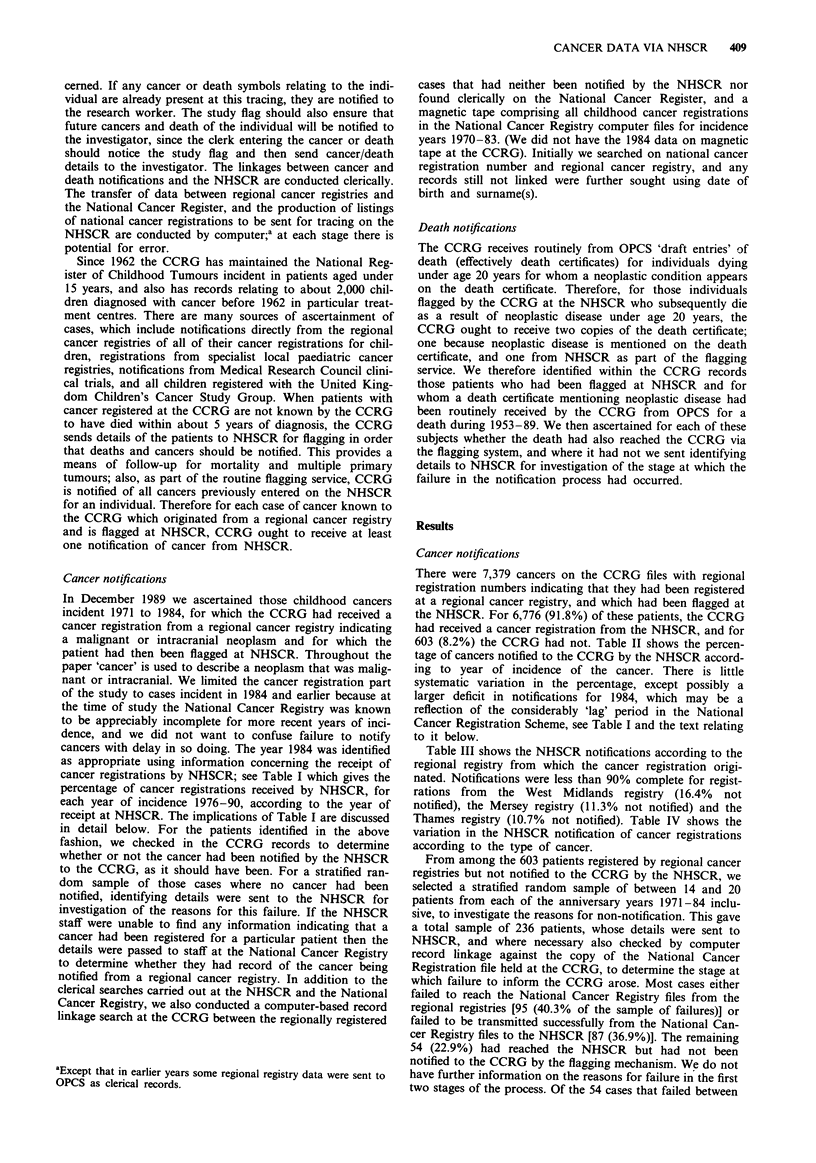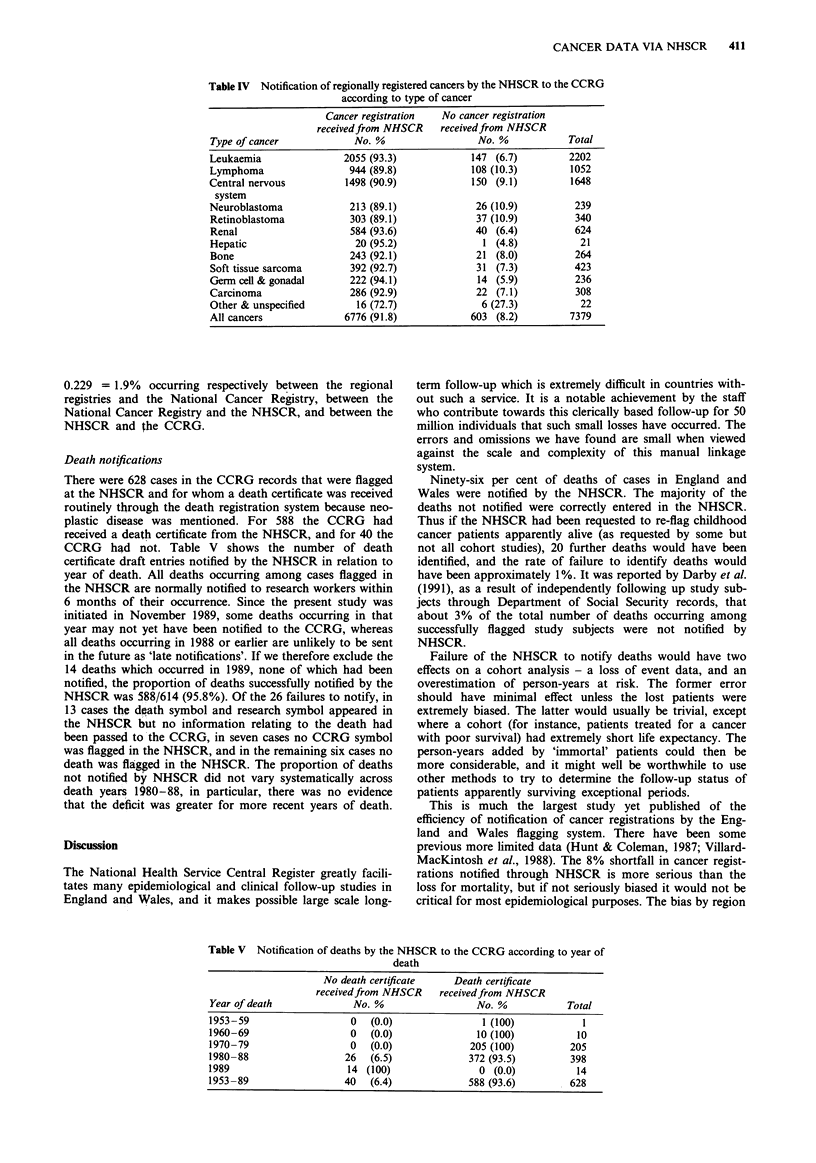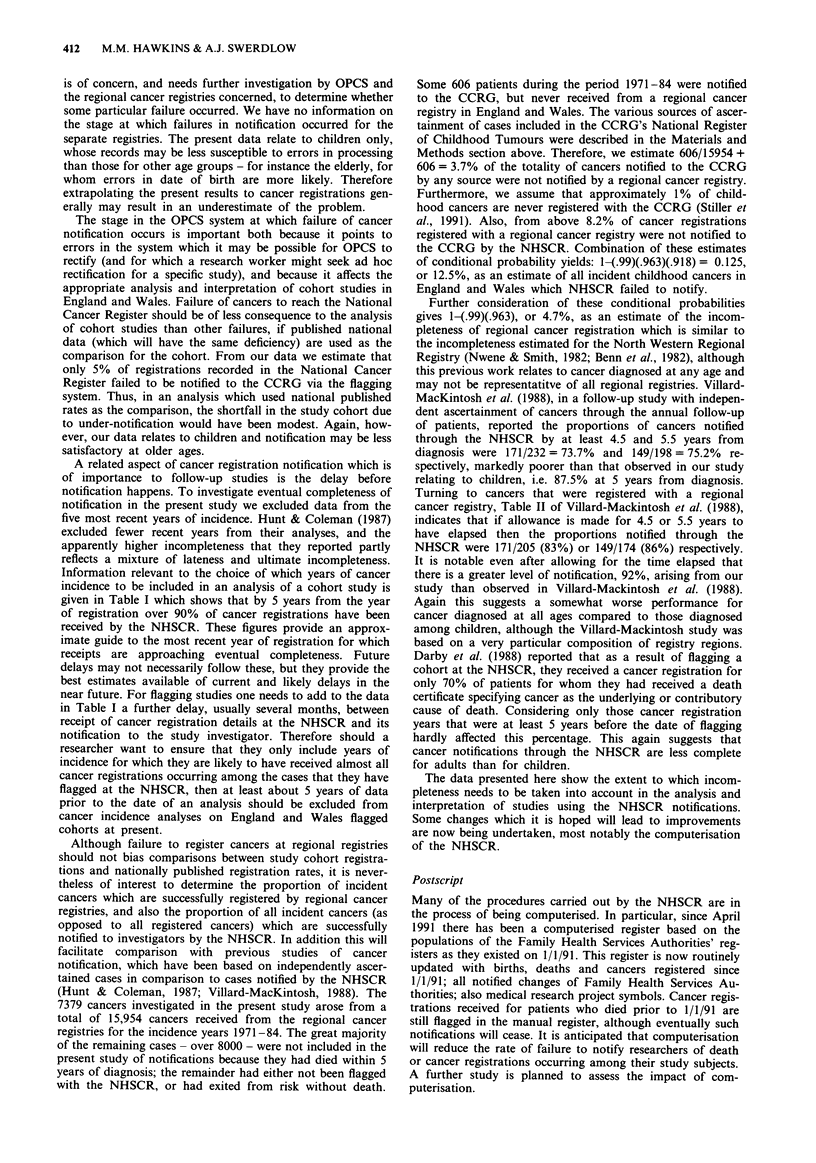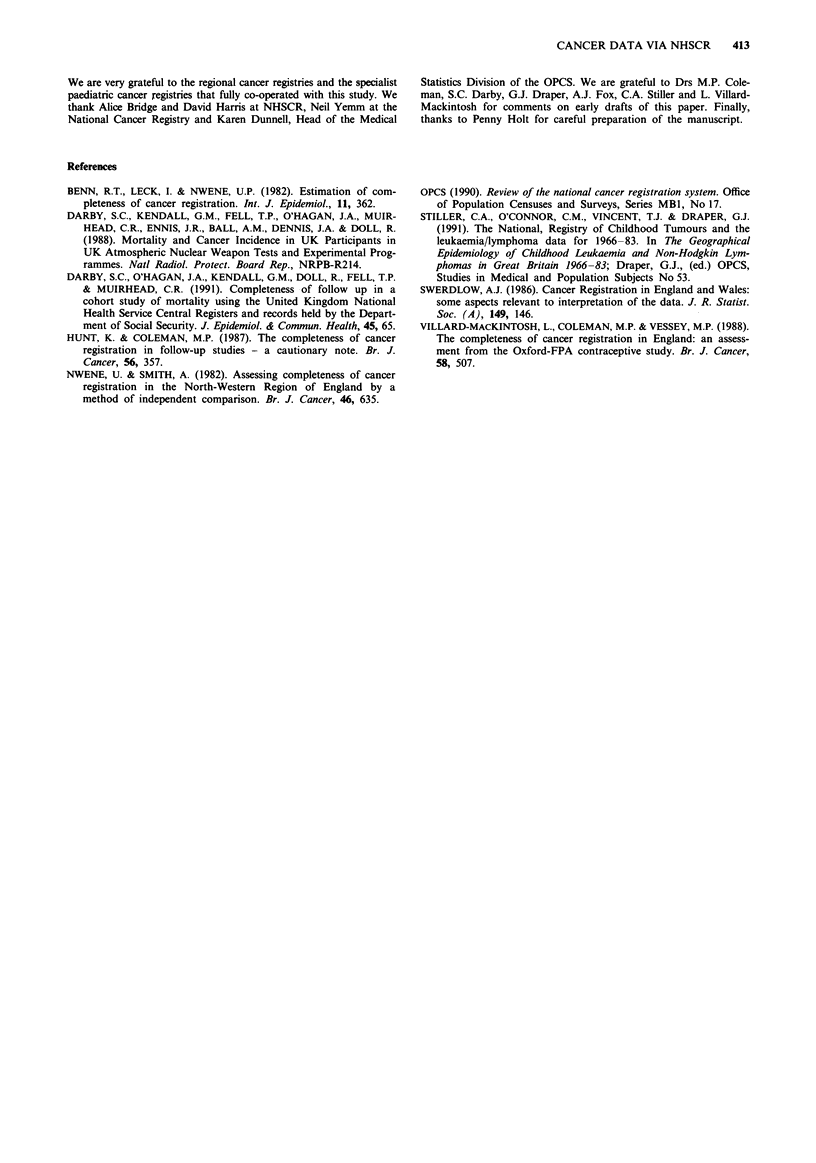Abstract
For the last 20 years the National Health Service Central Register (NHSCR) has been used as the principal source of follow-up for mortality, and often for cancer incidence, in many cohort and clinical follow-up studies in England and Wales. Completeness of notification of childhood cancer registrations and deaths from the NHSCR was investigated by comparison between cancers and deaths notified to the Childhood Cancer Research Group (CCRG) from this source and notifications received directly from regional cancer registries and the national death registry. Six thousand, seven hundred and seventy-six (91.8%) of 7,379 cancers incident 1971-84, and 588 (95.8%) of 614 deaths occurring 1953-88, were successfully notified. Failures in cancer notification occurred mainly between the regional cancer registries and the National Cancer Register (3.3%), and between the National Cancer Register and the NHSCR (3.0%). An additional 1.9% of cancer notifications failed between the NHSCR and the CCRG. Incompleteness of registration of childhood cancers by regional cancer registries was estimated to be 4.7%. A total of 12.5% of incident childhood cancers were not notified by NHSCR. Incompleteness of notification may be greater for adults, for whom registration and record linkage may be more difficult. Failures in death notifications occurred mostly because deaths entered on the NHSCR were not notified to the CCRG (3.3%). This incompleteness of notification needs to be taken into account in the interpretation of published studies and in the analysis of studies using NHSCR flagging. It also implies similar incompleteness in published national cancer survival data, which use the same system of flagging. Nevertheless it is a notable achievement that NHSCR has successfully monitored such a high proportion of a population of 50 million people, by entirely clerical procedures, for 40 years.
Full text
PDF





Selected References
These references are in PubMed. This may not be the complete list of references from this article.
- Benn R. T., Leck I., Nwene U. P. Estimation of completeness of cancer registration. Int J Epidemiol. 1982 Dec;11(4):362–367. doi: 10.1093/ije/11.4.362. [DOI] [PubMed] [Google Scholar]
- Darby S. C., O'Hagan J. A., Kendall G. M., Doll R., Fell T. P., Muirhead C. R. Completeness of follow up in a cohort study of mortality using the United Kingdom National Health Service Central Registers and records held by the Department of Social Security. J Epidemiol Community Health. 1991 Mar;45(1):65–70. doi: 10.1136/jech.45.1.65. [DOI] [PMC free article] [PubMed] [Google Scholar]
- Hunt K., Coleman M. P. The completeness of cancer registration in follow-up studies--a cautionary note. Br J Cancer. 1987 Sep;56(3):357–359. doi: 10.1038/bjc.1987.202. [DOI] [PMC free article] [PubMed] [Google Scholar]
- Nwene U., Smith A. Assessing completeness of cancer registration in the north-western region of England by a method of independent comparison. Br J Cancer. 1982 Oct;46(4):635–639. doi: 10.1038/bjc.1982.248. [DOI] [PMC free article] [PubMed] [Google Scholar]
- Villard-Mackintosh L., Coleman M. P., Vessey M. P. The completeness of cancer registration in England: an assessment from the Oxford-FPA contraceptive study. Br J Cancer. 1988 Oct;58(4):507–511. doi: 10.1038/bjc.1988.252. [DOI] [PMC free article] [PubMed] [Google Scholar]


